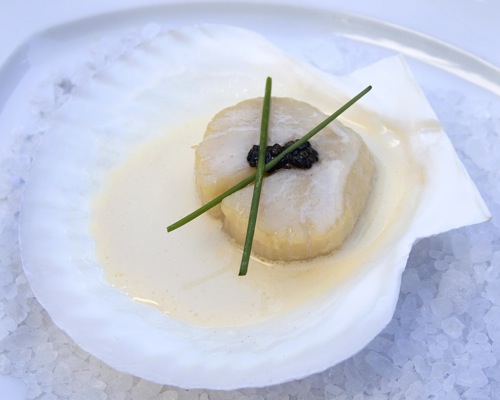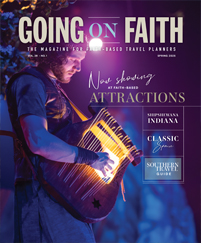
Courtesy San Antonio CVB
It’s in the citrus aroma of lime juice, the subtle adobe of the old missions and the gentle flow of the river: In San Antonio, irresistible flavor surrounds you.
Few places in the United States have the kind of rich cultural identity that San Antonio enjoys. Pay a visit, and you’ll discover the area’s essence in its signature cuisine, colorful neighborhoods, historical sites and outdoor gathering places. Although there’s a distinct element to uncover in each of these places, they all add up to an experience that is as colorful as the River Walk and as memorable as the Alamo.
I spent four days exploring San Antonio in May, reacquainting myself with the city’s charms. Along the way, I found a number of ways for groups to enjoy this Lone Star city, including some interactive experiences and epic events that will rate among your travelers’ best tour memories.
A River to Remember
The San Antonio River has been a central part of the city since the Spanish built missions on its banks in the 1700s. In the early 20th century, city leaders launched the plan to create the River Walk, which turned the area’s great natural resource into a tourism asset.
Today, the River Walk is perhaps the most memorable feature of San Antonio. The downtown district has been built on the banks of the river, and visitors can access hotels, shops, restaurants and museums on paths that follow the contours of the water. Walkers can stroll alongside the river and the well-landscaped gardens that run along both sides of the it.
The River Walk connects some of San Antonio’s most interesting neighborhoods. Walkers can trek through La Villita, which was the first residential settlement in San Antonio. The centuries-old neighborhood maintains its distinctly Mexican flair and today serves as an arts and crafts district. Visitors will find artisans in the historic homes making jewelry, leather goods, pottery, ceramics and other traditional items.
South of downtown, the River Walk leads to King William, a neighborhood built by German settlers that has become one of the most prestigious areas in town. Make the short walk down to this area, and you’ll find a quiet riverfront lined with green lawns and luxurious homes that reflect German architectural traditions.
In 2009, the city opened a new northern expansion of the River Walk that extends to an area known as the Museum Reach. This section of the river takes walkers to the waterfront entrance to the San Antonio Museum of Art, as well as to the former Pearl brewery complex, which has been converted into a community center with markets and educational facilities.
The River Walk is a great diversion for group members during free time, but it can also be incorporated into group activities. Groups can take narrated tours of the River Walk aboard downtown river barges or use the “rio taxis” in lieu of motorcoaches for scenic and entertaining transportation from one part of the city to another.
A Texas Shrine
Just a few blocks from the River Walk, the Alamo is San Antonio’s most iconic site. Generations of Texas schoolchildren have learned about the battle that took place there in 1836, and those events have become the stuff of nationwide legend.
Jeffrey Peppers, a docent manager at the Alamo, gave me a tour during my visit.
“This is one of the five missions founded in the San Antonio River Valley,” Peppers told me. “These missions were very successful. At its peak, this mission had a Native American population of about 300.”
Peppers walked me and some other visitors around various parts of the mission site — the famous chapel is only one of the buildings on the complex — and pointed out where other historic buildings once stood. He also gave us a quick overview of the peaceful years after the building was secularized in 1793.
The conversation, though, quickly turned to the events of the Texas Revolution, when 200 Texans took a stand against more than 3,000 Mexican troops under the command of General Santa Anna. The Texans eventually lost the battle, and almost all of them were killed; but their bravery earned them widespread fame and recognition in state and national history.
“There wasn’t a single coward on either side on that day,” Peppers said.
After telling us the short version of the battle, Peppers turned to the building itself. Outside, he pointed out bullet holes in the posts by the front door. Inside, he led us through the rooms of the chapel, telling us how they were used in the mission and what took place in those same places during the battle.
We also saw exhibits in the main chapel and adjacent buildings that showcased artifacts from the Alamo’s history, including an original Bowie knife, numerous weapons used in the battle and personal effects that belonged to Davy Crockett.










